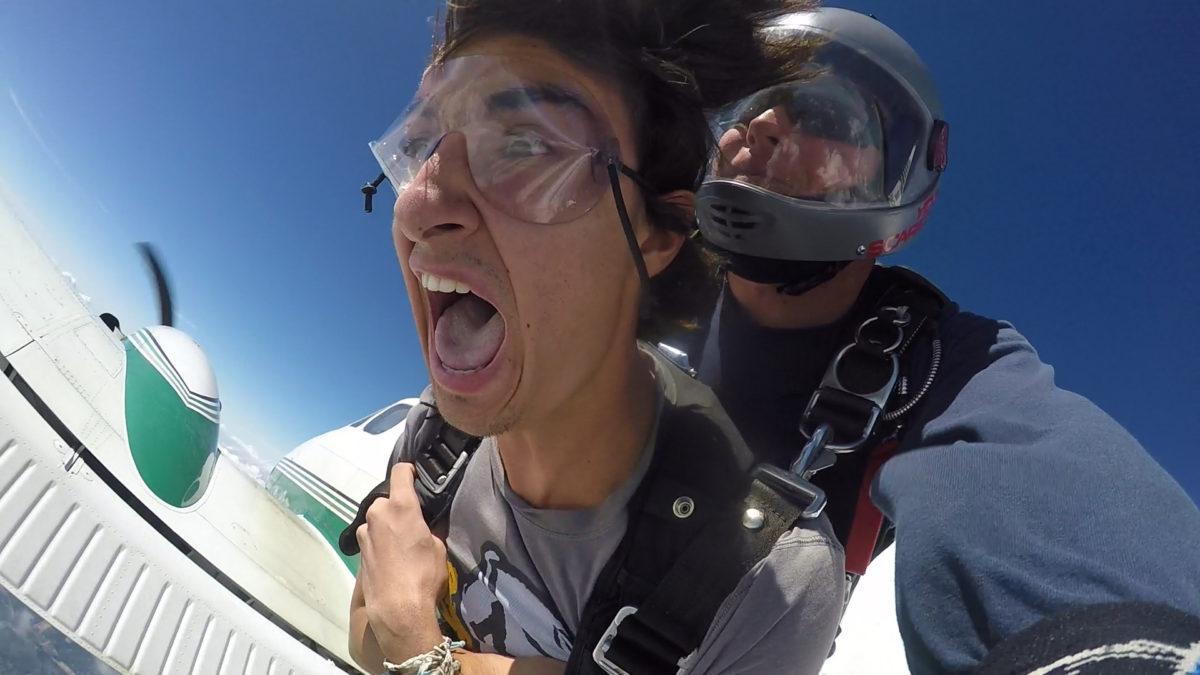- Michigan's Premier Skydiving Center
- Call Now: (517) 423-7720
What To Know About Skydiving With a Cold
Thursday, April 18, 2019
- Skydive Tecumseh
- 4/18/19
- 0
- General
Suffering through a cold and trying to decide if you feel up to skydiving this weekend? Let’s talk about ears and skydiving with a cold. Anyone who’s flown in a commercial aircraft knows that the changing air pressure can make your head and sinuses feel miserable. If you apply the logic of your previous flying experiences, you probably know that those same pressures will have at least a little effect on the skydiving experience. The plane goes up, parachute comes down, that cold you have means those eardrums and sinus cavities will not be happy.

The smaller size aircraft we use in skydiving isn’t pressurized. It would require a hydraulic jack to open the door of a pressurized plane, which would make the skydive exit tricky. Because the air is thinner higher up, the pressure outside your ears is less than inside. As you travel up in the airplane from thicker air to a thinner atmosphere, the differential creates a push from the inside to the outside as the two try to equalize. As you come down, that push reverses.
This is basic science, so it’s nice to know what rules those conditions set for a safe, comfortable and painless skydive for your ears and nose. Here are rules and how-tos:
RULE NUMBER 1: DON’T GO SKYDIVING WITH A COLD
Let’s repeat that rule. Don’t go skydiving with a cold. For these changing air pressures to be painless, your ears need to be clear. When you skydive with a head cold or sinus trouble, the blockages prevent the air pressure from equalizing.
Skydiving with a cold will result in one of two ugly results, the seriously embarrassing or the severely painful outcome. If you jump when you’re stuffy, you suffer the embarrassing outcome. The mucus in your sinus cavities has a tendency to come out all at once in freefall or under canopy, leaving both you and your Michigan Tandem Instructor a goopy mess. If you’re really congested, you might also suffer the painful outcome. The backed-up pressures can be enough to blow out an eardrum. Seriously, don’t risk it. If you’re stuffy, reschedule.

RULE NUMBER 2: EQUALIZE THE PRESSURE
You’ll feel the slowly changing pressure on the plane ride up, but it’s on the way down, when the pressure changes happen much more quickly, that you may feel the need to help things along proactively.
Descending quickly from thin air to thicker air can give you the physiological sense that your ears are blocked. Depending on how your ears are built, it may feel like you have earplugs in there. Many of our Michigan tandem skydiving students seem to notice this feeling when they’re under a freshly-opened parachute.
Don’t worry! The sensation is temporary, and you can take a few seconds to hurry it along. We have all experienced stuffed up ears, so you probably know what to do. To equalize the pressure, just pinch your nostrils closed, close your mouth and gently breathe out as though you were breathing out through your nose. You’ll notice the subtle crinkly sounds of the soft bones of your ears shifting slightly to accommodate the movement of air. If you need to clear a little bit more, just swallow at the same time you are gently blowing into your nose. This changes the air pressure inside your ears to match the air pressure outside, bringing that comfortable equilibrium back.
That’s it, just two rules for your safety and comfort. No skydiving with a cold, just reschedule! And remember to equalize your ears if you feel pressure under the canopy. Your ears will have as good a jump as the rest of you, and you’ll be able to hear everyone at Skydive Tecumseh cheering when you come in for the landing.
Copyright © 2025, Skydive Tecumseh, All Rights Reserved.
DropZone Web Design & Marketing by Beyond Marketing, LLC
